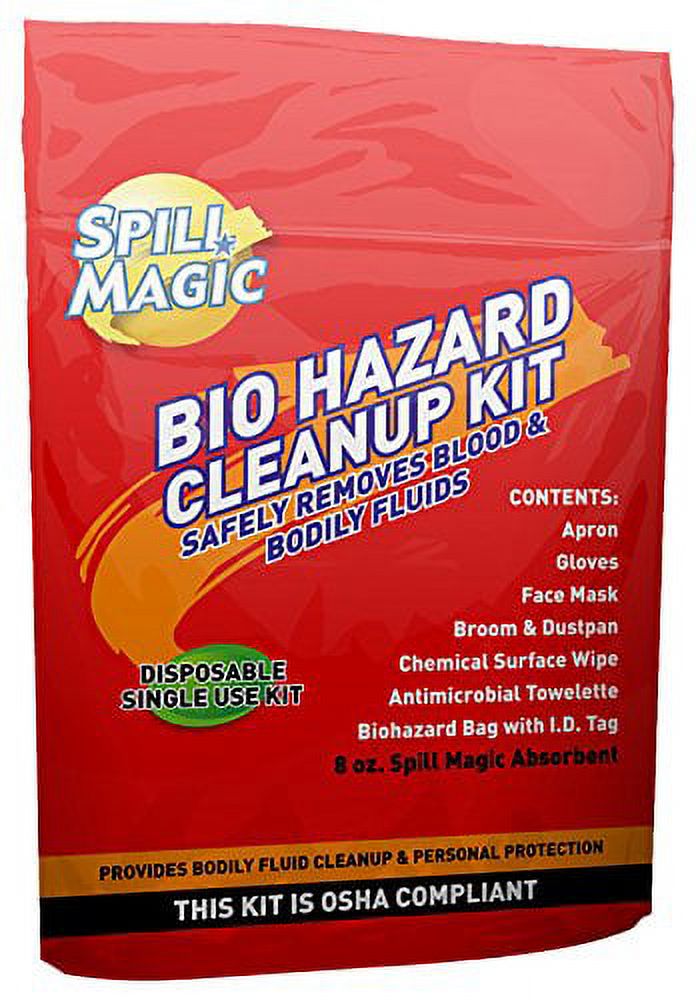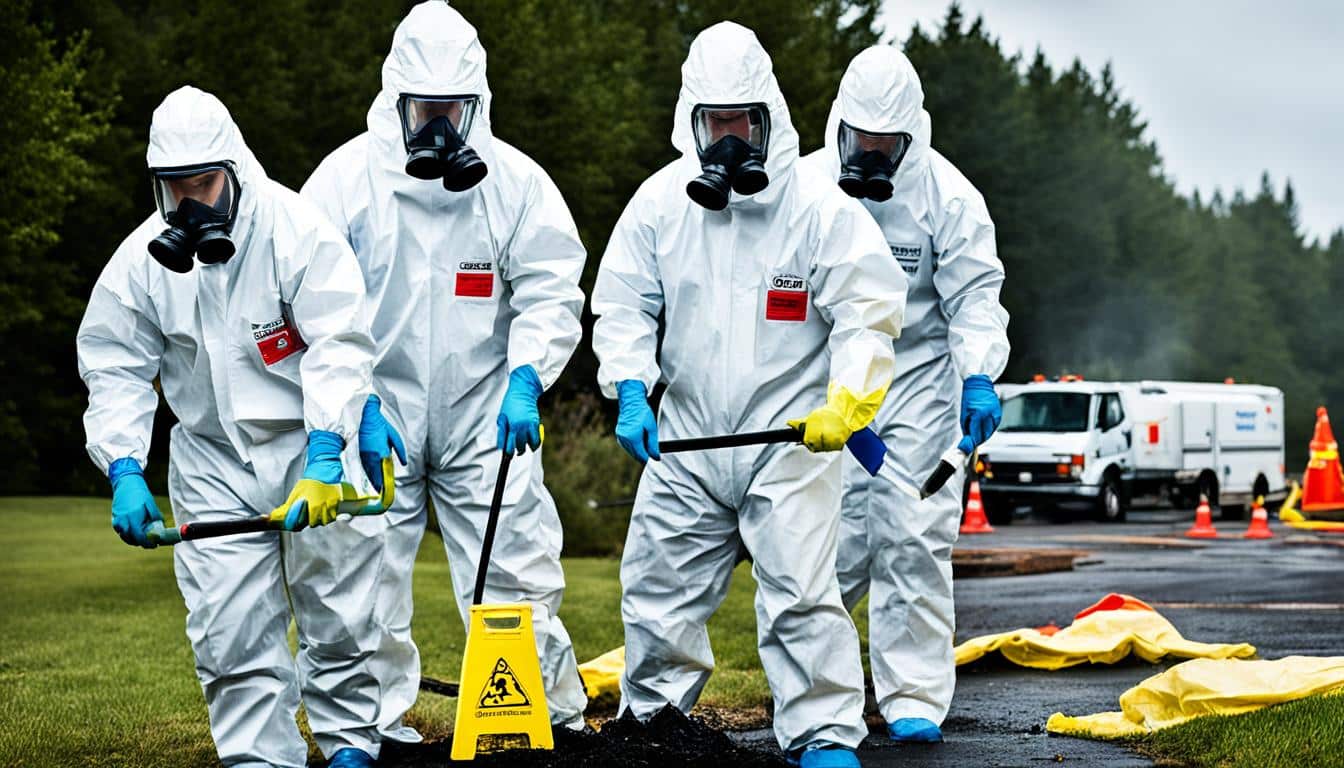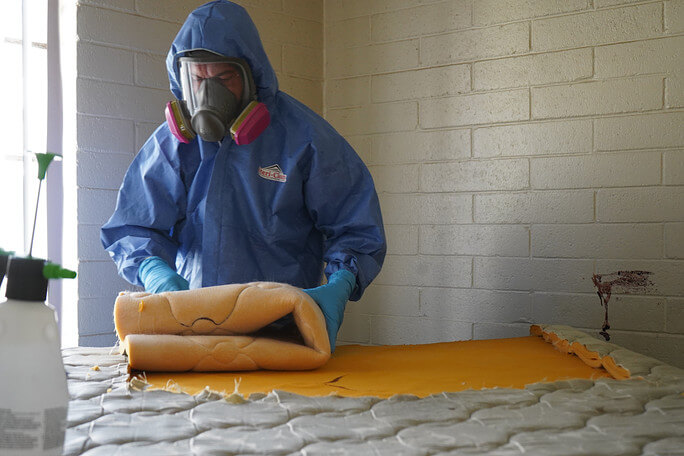Sewage Cleanup Solutions: Fast and Safe Remediation of Contaminated Areas
Expert Biohazard Clean-up for Crime Scenes, Trauma Incidents, and Contaminated Areas
In the realm of professional biohazard cleaning, thorough attention to information and adherence to security protocols are paramount. As we dive into the intricacies of biohazard cleanup for these sensitive settings, a deeper understanding of the difficulties and vital treatments included will arise, dropping light on the important duty of specialist cleaning services in recovering safety and peace of mind.

Relevance of Biohazard Cleanup
Biohazard clean-up adhering to criminal offense scenes and trauma occurrences is essential for making sure the safety of individuals and the setting. When these incidents happen, they usually leave behind a variety of biohazards such as blood, physical fluids, and other potentially contagious products. These compounds can harbor hazardous microorganisms like bacteria and infections, positioning significant health and wellness threats if not correctly cleaned up and disinfected.
Professional biohazard cleaning services are trained to deal with these hazardous products safely and efficiently. They have the needed devices, such as personal protective gear and specialized cleaning up representatives, to completely sanitize the affected areas. By leaving the cleaning to trained specialists, individuals can stay clear of direct exposure to harmful pathogens and prevent the spread of contagious illness.
Additionally, appropriate biohazard clean-up is necessary for shielding the setting. Inappropriate disposal of biohazardous products can pollute dirt, water sources, and air, posing a hazard to wild animals and the environment. By complying with strict clean-up methods, specialists can guarantee that biohazards are securely eliminated and taken care of in accordance with policies, reducing the threat of ecological contamination.
Kinds of Biohazards Encountered
Different harmful products typically experienced in crime scenes and injury incidents present substantial wellness dangers if not handled correctly. Blood and physical liquids are amongst the most common biohazards found in these scenarios.
One more sort of biohazard typically run into is sharp things like needles, busted glass, and other products that can create injuries and transmit infections. Chemical dangers are also a worry, as crime scenes might include compounds like tear gas, pepper spray, or medication production materials that require specialized handling and disposal procedures to protect against more harm.
Additionally, mold and mildew and microorganisms development can occur in spaces where decay or long term direct exposure to dampness has actually occurred. These microorganisms can release toxins and allergens right into the air, positioning respiratory system risks to those exposed. In general, biohazard cleanup experts have to be well-equipped and qualified to successfully manage these different kinds of harmful materials to make certain the safety of themselves and others.
Equipment and Safety Equipment
When dealing with the critical job of taking care of biohazards run into in criminal activity scenes and trauma events, the usage of proper tools and safety gear is paramount to ensuring the safety and security of people straight from the source associated with the cleanup process. Individual protective tools (PPE) such as handwear covers, masks, goggles, and coveralls are necessary to stop direct call with potentially harmful materials. Respirators are important when handling biohazards that may end up being air-borne, safeguarding employees from inhaling unsafe bits. Specialized cleansing tools like biohazard sharps, bags, and anti-bacterials containers are needed for the risk-free collection and disposal of polluted products. In addition, durable tools such as industrial-grade cleaner, foggers, and ozone generators might be needed to thoroughly sterilize the damaged area. Ensuring that all equipment is correctly preserved, regularly inspected, and made use of according to security guidelines is vital in go to my site minimizing the threat of direct exposure to biohazards throughout cleanup operations.
Clean-up Refine and Methods
Comprehensive and effective cleaning of biohazardous products from criminal activity scenes and injury occurrences calls for meticulous attention to information and adherence to strict safety procedures. The cleaning procedure commonly entails a number of key actions.
Complying with the elimination of biohazardous materials, the affected location goes through a complete cleaning and disinfection procedure. This step includes the usage of specialized cleaning up representatives and tools to ensure that all traces of contamination are gotten rid of. After cleaning, the location undergoes extensive screening to confirm that it is risk-free and complimentary of any continuing to be biohazards.

Purification and Disposal Treatments
To make certain extensive purification and correct read what he said disposal of biohazardous materials, adhering to the careful clean-up process, details treatments should be thoroughly followed with stringent adherence to safety methods. Decontamination includes the elimination or neutralization of contaminants to decrease the danger of exposure and spread of dangerous materials. This procedure typically includes cleaning, decontaminating, and disinfecting the affected location making use of specific devices and EPA-approved chemicals.
As soon as purification is completed, correct disposal of biohazardous materials is critical to avoid more contamination or harm. Biohazardous waste, such as physical fluids or blood-soaked products, need to be very carefully collected, packaged, and labeled according to governing guidelines. ATP testing. These materials are after that transported to licensed centers for disposal through ideal channels, making sure compliance with local, state, and government guidelines

Verdict
In verdict, expert biohazard cleanup is essential for making sure the efficient and safe removal of hazardous materials from criminal offense scenes, injury events, and polluted areas. By using specialized tools, protective equipment, and following appropriate cleaning processes and techniques, biohazard cleaning teams can effectively sanitize and dispose of biohazards, decreasing the risk of exposure and injury to people and the atmosphere.
As we delve into the intricacies of biohazard cleaning for these sensitive environments, a much deeper understanding of the obstacles and vital treatments included will certainly arise, dropping light on the important duty of specialist clean-up solutions in bring back security and tranquility of mind.
Expert biohazard clean-up services are trained to handle these harmful products securely and successfully. By adhering to rigorous cleanup protocols, experts can ensure that biohazards are securely eliminated and disposed of in conformity with regulations, decreasing the risk of environmental contamination.
Overall, biohazard cleanup professionals need to be qualified and well-equipped to effectively take care of these various types of harmful products to ensure the security of themselves and others.
When resolving the essential job of handling biohazards experienced in crime scenes and injury cases, the use of correct devices and protective gear is vital to ensuring the security of people involved in the clean-up process.